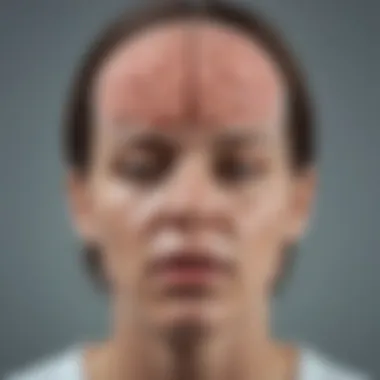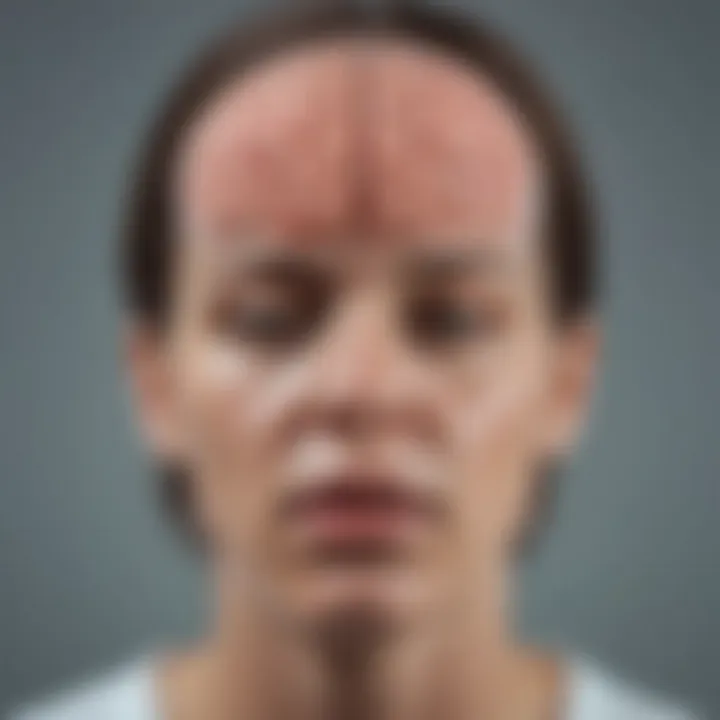Harnessing the Transformative Power of Deep Breathing for Stress Relief


Wellness
In today's fast-paced world, stress has become a common denominator in our lives. While it may seem inevitable, there is a simple and powerful tool that holds the key to relieving stress and enhancing overall well-being - deep breathing. Scientific research has shed light on the profound impact of deep breathing techniques on both physical and mental health. Through a series of deliberate breaths, individuals can tap into a natural mechanism that activates the body's relaxation response, counteracting the effects of stress hormones and promoting a sense of calmness and clarity.
Physical Health
The physical health benefits of deep breathing are vast and remarkable. When we engage in deep breathing exercises, such as diaphragmatic breathing or box breathing, we increase the supply of oxygen to our brain and muscles. This boost in oxygenation not only improves concentration and focus but also enhances overall energy levels and vitality. Furthermore, deep breathing plays a crucial role in reducing blood pressure, lowering heart rate, and promoting optimal lung function. By incorporating deep breathing into daily routines, individuals can support their physical well-being and cultivate a deeper connection with their bodies.
Mental Health
On the mental health front, deep breathing acts as a potent antidote to stress and anxiety. By regulating the body's response to stress through controlled breathing patterns, individuals can effectively manage overwhelming emotions and foster a greater sense of resilience. Deep breathing techniques have been linked to decreased levels of cortisol, the primary stress hormone, leading to improved mood and mental clarity. Moreover, deep breathing promotes mindfulness and present-moment awareness, grounding individuals in the here and now and significantly reducing symptoms of depression and anxiety.
Nutrition and Diet
While proper nutrition is essential for overall health, the role of deep breathing in supporting healthy eating habits should not be understated. Stress and anxiety often lead to mindless eating and unhealthy food choices. By incorporating deep breathing exercises before meals, individuals can create a mindful eating ritual that promotes digestion, absorption of nutrients, and satiety. Deep breathing cultivates awareness of hunger cues and helps individuals differentiate between physical hunger and emotional cravings, contributing to a balanced and nourishing diet.
Fitness and Exercise
In the realm of fitness and exercise, deep breathing serves as a valuable tool for optimizing performance and recovery. Proper breathing techniques during physical activity enhance oxygen delivery to muscles, improve endurance, and prevent premature fatigue. Deep breathing exercises post-workout facilitate the removal of metabolic waste products from muscles, reducing soreness and accelerating recovery. By incorporating deep breathing into exercise routines, individuals can amplify their fitness gains and establish a profound mind-body connection that enhances overall well-being.
Introduction
Stress is an inescapable part of modern life, impacting our well-being and daily functioning. Recognizing the importance of managing stress effectively is crucial for maintaining a balanced and healthy lifestyle. This article sheds light on the transformative power of deep breathing techniques in alleviating stress and promoting a sense of calm and clarity amidst life's pressures.
Understanding Stress
Definition and Types of Stress: Stress can manifest in various forms and intensities, affecting individuals differently. The intricate interplay between acute stress, chronic stress, and their physiological manifestations is a critical aspect explored in this article. Understanding the distinctions between these stress types is fundamental in devising tailored stress-relief strategies.
Impact of Stress on Health: Stress exerts a multifaceted influence on both our physical and mental well-being. Its disruptive effects on the nervous system, immune function, and overall health are significant considerations in the context of stress management. Exploring these impacts underscores the imperative nature of addressing stress proactively to safeguard our health and quality of life.
The Science Behind Deep Breathing
Effects on the Nervous System: Deep breathing serves as a potent tool in regulating the autonomic nervous system, primarily through activating the parasympathetic response. This section delves into the physiological mechanisms by which deep breathing modulates stress hormones, heart rate variability, and neural activity to foster relaxation and emotional equilibrium.
Role of Diaphragmatic Breathing: Central to the efficacy of deep breathing lies the practice of diaphragmatic breathing, also known as abdominal or belly breathing. This technique focuses on engaging the diaphragm to optimize lung capacity and respiratory efficiency, leading to profound relaxation, improved oxygenation, and enhanced mental clarity.


Physiological Benefits of Deep Breathing
Reduced Cortisol Levels: Deep breathing plays a pivotal role in mitigating the harmful effects of stress on the body, notably by lowering cortisol levels. Through its stress-reducing effects, deep breathing helps restore hormonal balance, reduce inflammation, and promote overall wellness.
Improved Oxygen Circulation: The enhanced oxygen supply facilitated by deep breathing supports cellular function, metabolic processes, and cognitive performance. By improving oxygen circulation, deep breathing optimizes energy production, enhances tissue oxygenation, and bolsters cardiovascular health, underscoring its vital role in bolstering physical and mental well-being.
Practical Techniques
Practical Techniques play a crucial role in the stress-relieving journey explored throughout this article. In understanding the essence of practical techniques, individuals can grasp tangible methods to combat stress effectively. These techniques offer specific steps and considerations to enhance one's well-being, providing a structured approach to deep breathing for stress relief.
Diaphragmatic Breathing
Step-by-Step Guide
The Step-by-Step Guide to Diaphragmatic Breathing holds significance in cultivating a deeper sense of relaxation and promoting overall stress reduction. This guide breaks down the process into manageable steps, emphasizing the correct way to engage the diaphragm for optimal results. Learning the proper technique ensures that individuals harness the full benefits of deep breathing, such as increased oxygen intake and enhanced body-mind connection. The Step-by-Step Guide's simplicity makes it a popular choice for those seeking immediate stress relief through focused breathing practices.
Highlighting the unique feature of the Step-by-Step Guide enlightens individuals on the precise rhythm and depth of breathing required for maximum impact. Its advantage lies in its accessibility and ease of implementation, making it a beneficial tool for beginners embarking on their stress-relief journey.
Tips for Effective Practice
Tips for Effective Practice complement the Step-by-Step Guide by providing additional insights and strategies for optimizing the diaphragmatic breathing experience. These tips address common challenges that individuals may encounter, offering practical solutions to enhance the effectiveness of each breath. Emphasizing consistency and mindfulness in practice, these tips elevate the overall benefits of diaphragmatic breathing in stress management.
The key characteristic of Tips for Effective Practice lies in its ability to tailor the breathing technique to individual needs, ensuring a personalized and rewarding experience. By highlighting the importance of posture, relaxation, and mental focus, these tips enhance the depth and efficacy of each breath, empowering individuals to fully harness the stress-relieving potential of deep breathing.
Alternate Nostril Breathing
Instructions for Practice
Instructions for Practice in Alternate Nostril Breathing guide individuals through a calming and balancing breathing technique that harmonizes the body's energy flow. This practice involves sequential breathing through each nostril, promoting mental clarity and emotional equilibrium. The instructions emphasize the rhythmic pattern of breath and hand placement for optimal results, allowing individuals to experience a sense of inner harmony and relaxation.
The unique feature of Instructions for Practice lies in its ability to synchronize breath with movement, creating a dynamic and meditative practice that engages both mind and body. This synchronization enhances focus and concentration, making it a popular choice for individuals seeking a holistic approach to stress relief.
Benefits for Stress Relief
Benefits for Stress Relief associated with Alternate Nostril Breathing encompass a wide range of advantages for the mind and body. This practice calms the nervous system, reduces anxiety levels, and promotes emotional well-being. By regulating the flow of prana (life force energy), individuals experience enhanced energy levels and mental clarity, making it a valuable tool for stress management.


The key characteristic of Benefits for Stress Relief is its ability to instill a sense of balance and tranquility within individuals, fostering a harmonious relationship between mind and body. By promoting relaxation and focus, this practice enables individuals to navigate stressful situations with greater resilience and poise.
Box Breathing Technique
Origins and Methodology
The Box Breathing Technique's Origins and Methodology trace back to ancient practices and military training, illustrating its effectiveness in enhancing concentration and reducing stress. This technique involves a precise breathing pattern of inhalation, holding the breath, exhalation, and holding the breath again, forming a 'box' shape. The structured nature of this technique fosters mental discipline and emotional stability, making it a valuable asset in stress management.
Highlighting the unique feature of Origins and Methodology showcases the systematic approach of the Box Breathing Technique, which promotes a sense of control and resilience in challenging situations. Its advantage lies in its adaptability to various contexts, allowing individuals to employ this technique wherever they are to regain composure and focus.
Applications in Stress Management
Applications in Stress Management utilizing the Box Breathing Technique offer practical solutions for handling stress in daily life. This technique equips individuals with a versatile tool to manage anxiety, enhance concentration, and promote clarity of thought. By integrating the Box Breathing Technique into daily routines, individuals develop a heightened sense of self-awareness and emotional regulation.
The key characteristic of Applications in Stress Management is its ability to empower individuals to respond to stress proactively, rather than reactively. By incorporating structured breathing practices into their day, individuals cultivate a resilient mindset and adaptable coping mechanisms, facilitating a healthier approach to stress management.
Incorporating Deep Breathing into Daily Life
In the realm of stress relief, the integration of deep breathing into daily routines plays a pivotal role in promoting well-being. The constant demands and pressures of modern life can easily lead to heightened stress levels, impacting both mental and physical health. By incorporating deep breathing exercises into daily life, individuals can cultivate a sense of calm and enhance their overall quality of life. The beauty of deep breathing lies in its simplicity and accessibility, making it a practical tool for individuals seeking to manage stress effectively.
Morning Routine
Starting the Day with Deep Breathing:
Commencing the day with a deep breathing practice sets a positive tone for the hours ahead. By engaging in intentional and mindful breathing techniques, individuals can center themselves, allowing for greater focus and clarity as they begin their daily tasks. The act of starting the day with deep breathing aids in regulating stress levels, enabling individuals to approach challenges with a sense of calm and composure. This aspect of deep breathing highlights its ability to establish a solid foundation for a productive and balanced day.
Enhancing Mental Clarity:
The enhancement of mental clarity through deep breathing serves as a significant benefit for individuals navigating the complexities of daily life. By practicing deep breathing techniques, individuals can sharpen their cognitive functions and improve concentration levels. The clarity attained through deep breathing empowers individuals to think more clearly, make sound decisions, and tackle tasks with heightened efficiency. This facet of deep breathing underscores its effectiveness in optimizing mental acuity and enhancing cognitive performance.
During Work Hours
Quick Breathing Exercises:
During work hours, quick breathing exercises provide a valuable respite from the demands of the professional environment. These short yet effective exercises offer a swift way to alleviate stress and refresh the mind, allowing for improved focus and productivity. Quick breathing exercises serve as a convenient tool for individuals to recalibrate their mental state amidst work-related pressures, fostering a sense of balance and mental well-being throughout the day.


Managing Stress at the Workplace:
The application of deep breathing for stress management in the workplace is a practical and beneficial choice for individuals striving to maintain optimal performance levels. By incorporating specific deep breathing techniques tailored to the office setting, individuals can counteract workplace stressors and promote a harmonious work environment. Managing stress at the workplace through deep breathing empowers individuals to cultivate resilience, adaptability, and emotional regulation, essential qualities for navigating professional challenges with grace and poise.
Evening Relaxation
Winding Down with Deep Breaths:
As the day draws to a close, winding down with deep breathing offers a soothing transition into the evening hours. Engaging in intentional breathing exercises helps individuals release accumulated tension, unwind from the day's activities, and prepare for a restful night's sleep. Winding down with deep breaths allows individuals to foster a sense of peace and relaxation, setting the stage for rejuvenation and emotional well-being.
Promoting Restful Sleep:
Promoting restful sleep through deep breathing techniques is a powerful strategy for enhancing overall sleep quality and promoting optimal health. By incorporating calming breathing exercises before bedtime, individuals can signal the body to enter a state of relaxation, easing the transition into restorative sleep. The practice of promoting restful sleep through deep breathing facilitates a deeper and more rejuvenating sleep experience, enabling individuals to wake up feeling refreshed and revitalized the following morning.
Advanced Practices and Resources
In this section of the article, we delve into the importance of advanced practices and resources related to deep breathing for stress relief. It is crucial to explore these advanced techniques and tools as they offer a more profound level of stress management and overall well-being enhancement. By focusing on specific elements such as mindfulness techniques, guided meditation sessions, breathwork workshops, and breathwork apps and devices, individuals can elevate their deep breathing practices to new heights. These advanced resources provide in-depth insights and structured approaches that can significantly impact one's mental and physical health.
Mindful Breathing Meditation
Mindful breathing meditation plays a pivotal role in promoting cognitive and emotional wellness. The focus on mindfulness techniques within deep breathing practices cultivates a heightened sense of awareness and presence in the moment. This technique emphasizes the importance of being fully attentive to one's breath, thoughts, and sensations without judgment. The uniqueness of mindfulness techniques lies in their ability to enhance self-regulation, reduce rumination, and promote relaxation effectively. While mindful breathing can be a popular choice for stress relief, individuals must be aware of the potential challenges associated with maintaining sustained focus and addressing distractions that may arise during practice.
Guided Meditation Sessions
Guided meditation sessions serve as valuable aids in deepening one's meditation practice and exploring different facets of relaxation and stress reduction. These sessions offer structured guidance through audio recordings or in-person sessions, leading individuals through various meditation exercises. The key characteristic of guided meditation lies in its ability to provide a framework for beginners and seasoned practitioners alike, ensuring a gradual progression towards a meditative state. The unique feature of guided meditation sessions is the opportunity they provide for individuals to access specialized instructions and personalized experiences tailored to their specific needs. While guided meditation sessions are beneficial in terms of facilitating relaxation and inner peace, some individuals may find it challenging to maintain consistency or may prefer self-guided practices for greater autonomy in their meditation routines.
Breathwork Workshops
Within the realm of advanced practices, breathwork workshops offer immersive experiences designed to deepen the understanding and application of breathing techniques for enhanced well-being. The offerings encompass both in-person and online formats, catering to diverse preferences and accessibility. The key characteristic of breathwork workshops is the interactive nature of the sessions, allowing participants to engage in practical exercises, group discussions, and personalized guidance from experienced facilitators. The unique feature of breathwork workshops lies in their ability to foster a sense of community and shared exploration of breathwork practices, cultivating a supportive environment for personal growth and deep relaxation. While the benefits of structured programs are manifold, individuals should be mindful of the potential challenges related to group dynamics, pacing, and individual comfort levels that may influence their workshop experiences.
Benefits of Structured Programs
Delving into the benefits of structured programs incorporated within breathwork workshops reveals the multifaceted advantages of these organized approaches to deep breathing techniques. Structured programs offer a systematic framework for individuals to progress through various breathing exercises, mindfulness practices, and relaxation techniques, ensuring a comprehensive and holistic approach to stress relief. The key characteristic of structured programs is their emphasis on tailored guidance and skill development, enabling participants to refine their breathing patterns and enhance their overall well-being systematically. The unique feature of structured programs is their capacity to provide a structured yet flexible environment for individuals to explore different facets of breathwork, fostering a sense of mastery and personal empowerment. While the advantages of structured programs are evident in promoting consistency and growth, individuals should be aware of the commitment required to fully engage in and benefit from these programs.
Breathwork Apps and Devices
Technology for breathing guidance has revolutionized the accessibility and convenience of deep breathing practices, offering individuals a wide array of apps and devices to support their relaxation and stress management efforts. These technological tools provide interactive guidance, visual feedback, and customizable settings to enhance the effectiveness of breathing exercises. The key characteristic of technology for breathing guidance is its ability to adapt to individual preferences and learning styles, allowing users to personalize their breathing sessions according to their needs. The unique feature of technology for breathing guidance lies in its portability and user-friendly interface, making it a popular choice for individuals seeking on-the-go solutions for stress relief. While the advantages of using breathwork apps and devices are evident in facilitating consistency and progress tracking, individuals should be cautious of relying solely on technology and maintain a balance with in-person practices to ensure a comprehensive approach to deep breathing for stress relief.
Tracking Progress and Consistency
Exploring the role of tracking progress and consistency in deep breathing practices reveals the significant impact of monitoring one's efforts and development over time. By keeping track of breathing sessions, meditation durations, and subjective experiences, individuals can gain valuable insights into their progress and adherence to their practice routines. The key characteristic of tracking progress and consistency is its ability to provide tangible feedback and motivation, encouraging individuals to stay committed to their deep breathing goals. The unique feature of tracking progress lies in its capacity to identify patterns, challenges, and areas for improvement, enabling individuals to make informed adjustments and optimize their deep breathing practices efficiently. While the benefits of tracking progress are evident in promoting accountability and goal attainment, individuals should approach this aspect with a balanced mindset, recognizing the fluid nature of progress and the importance of flexibility in their practice routines.



